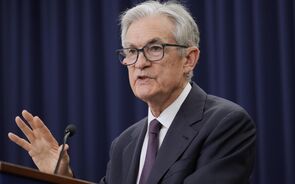Rwanda: Lessons of a genocide
2 mensagens
|Página 1 de 1
Rwanda: Lessons of a genocide

Lessons of a genocide
Rwanda, remembered
Mar 25th 2004
From The Economist print edition
Ten years after Rwanda's genocide, what has the world learned?
IT WAS the purest genocide since 1945, and perhaps the single greatest act of evil since Pol Pot turned Cambodia into a killing field. But how many people can name any of the perpetrators of the Rwandan genocide of 1994? The alleged mastermind, Colonel Théoneste Bagosora, who is now on trial, is not exactly a household name. The world has not forgotten Rwanda's tragedy, but it has not examined it in much detail, either. And there are still lessons to be learned.
Outsiders often assume that the genocide sprang spontaneously from primeval ethnic antagonism. On the contrary, it was planned over many months—Mr Bagosora sketched out part of the programme in his appointment book in early 1993. Militias had to be organised, machetes bought and distributed, and Hutu peasants persuaded, through skilful propaganda, that all Tutsis were their enemies. The opportunity came on April 6th 1994, when Rwanda's Hutu president was assassinated. Mr Bagosora and his co-conspirators seized control of one of the world's most authoritarian states, the whole apparatus of which was then turned to mass murder.
Not primeval, just evil
The assumption that the genocide erupted amid chaos made it easier for western policymakers at the time to shrug that little could be done. They were wrong. The small gang of Hutus who organised the genocide were rational men in pursuit of a rational—albeit evil—objective. They wanted to stay in power, and they harnessed ethnic hatred as a means to that end. They could have been deterred.
Their regime was heavily dependent on aid. If donors had made it clear that aid would cease for ever unless the genocide ceased immediately, the génocidaires would have found it much harder to persuade the rest of the Hutu elite to go along with their plan. During the genocide, requests from the French government, for example, not to attack a hotel where many prominent Tutsis had sought sanctuary, brought immediate results. Sterner warnings might have had a calming effect.
Failing that, western powers could have used force to end the killing. Romeo Dallaire, the UN's soldier on the spot, said it would have taken only 5,000 troops. Others think more would have been needed, but most agree that a determined military intervention would have saved many lives. And it could have been done. Instead, the UN withdrew its tiny presence. No one even jammed the radio station that urged on the killers with slogans such as “the graves are not yet full.”
Ten years on, some lessons have been learned. Rwanda's Tutsi-dominated government, born of the rebel army that stopped the genocide, has learned never to trust the UN, or any other foreign body, to protect its people. Since Tutsis are a small minority, and since thousands of armed génocidaires still lurk in the rainforests of Congo, Rwanda's giant neighbour, it is hardly surprising that they feel vulnerable.
Though they would deny it, Rwanda's ruling party and its tough-as-kevlar president, Paul Kagame, have concluded that the only way to guarantee the survival of the Tutsis is to remain in power indefinitely. In many respects, they rule well: Rwanda has seen a remarkable recovery since 1994 (see article). But they tolerate no serious domestic opposition, nor much in the way of free speech. Rwanda today is a thinly-disguised autocracy, where dissidents, who are usually accused of genocidal tendencies, live in fear, or exile, or both. The regime is also a menace to its neighbours. It was justified in invading Congo to disperse the génocidaires who were using the place as a base for attacks on Rwanda, but it surely did not have to kill 200,000 people in the process.
The rest of the world has learned different lessons from its failure ten years ago. Then, the West's reluctance to get involved was largely a consequence of America's shambolic intervention in Somalia the previous year. Since then, the response to all remotely similar emergencies has been guided by a desire not to allow a repeat of Rwanda. Some of the results have been encouraging. NATO eventually checked Serb aggression in the Balkans, though only after the 1995 Srebrenica massacre. British troops ended Sierra Leone's terrible civil war. Last year, in Congo's Ituri region, UN peacekeepers found themselves in a position with ominous echoes of Rwanda in April 1994: outnumbered, lightly armed and unable to prevent horrific tribal killings. Instead of cutting and running, Europe sent a French-led force to restore order, with some success.
The genocide has also jolted the world into reconsidering how to prosecute mass killers. Ad hoc international tribunals for Rwanda and the former Yugoslavia, though slow and costly, are gradually securing convictions. Several countries have passed laws allowing their courts to try those accused of genocide, regardless of where the crime was committed. The impetus to set up an International Criminal Court sprang partly from the world's shame over Rwanda. Legally, genocide is oddly defined—why is it worse to seek to eliminate an ethnic group than a socio-economic one? It is also hard to prove. Few cases are as clear-cut as Rwanda's; Slobodan Milosevic, the former Serb leader, may be acquitted of genocide, though probably not of other grave charges.
This time, never again
The surest way to prevent genocide would be to see it coming. With hindsight, there were plenty of warnings in Rwanda: speeches, editorials, preparatory massacres and so on. Outsiders did not take those warnings seriously, however, because what was being planned was so implausible. Better early-warning systems are needed: a UN special rapporteur on genocide, proposed in January by Kofi Annan, the UN secretary-general, and reporting directly to the security council, would be a start. But timely detection is difficult; genocides usually occur amid the haze of war. Even the most astute observers did not recognise Rwanda's for what it was until nearly two weeks after it began, by which time nearly half the victims were dead. The grimmest lesson from 1994 is that men are capable of evil most people would consider “unimaginable”, had they not seen the rows of punctured skulls.
Um abraço,
MozHawk
2 mensagens
|Página 1 de 1
Quem está ligado:
Utilizadores a ver este Fórum: Bar38, Carrancho_, Google [Bot], iniciado1, Ipr, jat19001900, jeronimovaldemars, jprgodinho, nbms2012, OCTAMA, peterteam2, Sertorio e 69 visitantes


